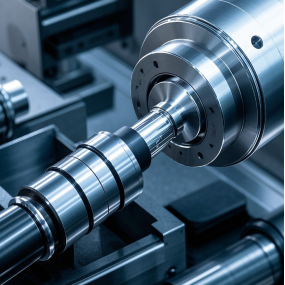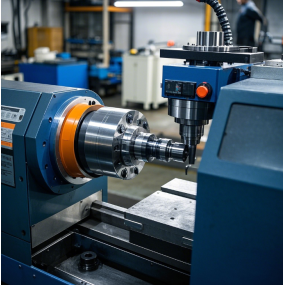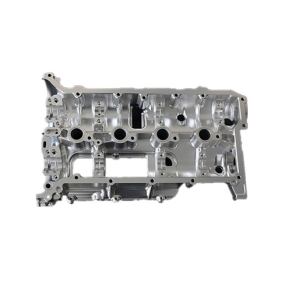In the process of using Shenyang laser cutting machine to cut sheet metal, various problems are often encountered. In order to ensure cutting quality, the following are several common problems and common solutions:
1. Cutting and perforation technology:
Any thermal cutting technique, except for a few cases where it can start from the edge of the board, generally requires a small hole to be drilled through the board. Previously, on laser stamping composite machines, a punch was used to punch out a hole first, and then laser was used to start cutting from the small hole. There are two basic methods for piercing laser cutting machines without stamping devices:
Blasting perforation - After continuous laser irradiation, a pit is formed in the core of the material, and then the molten material is quickly removed by an oxygen flow coaxial with the laser beam to form a hole. The size of the general hole is related to the thickness of the plate, and the average diameter of the blasting perforation is half of the plate thickness. Therefore, for thicker plates, the blasting perforation hole diameter is larger and not round, and it is not suitable for use on parts with high processing accuracy requirements. It can only be used on waste materials. In addition, due to the same oxygen pressure used for perforation as during cutting, there is a larger splash.
Pulse perforation - using high peak power pulse laser to melt or vaporize a small amount of material, commonly using air or nitrogen as auxiliary gas to reduce hole expansion due to exothermic oxidation, and the gas pressure is lower than the oxygen pressure during cutting. Each pulse laser only produces small particle jets that gradually penetrate deeper, so the perforation time for thick plates takes a few seconds. Once the perforation is completed, immediately replace the auxiliary gas with oxygen for cutting. This way, the perforation diameter is smaller and the perforation quality is better than that of blasting perforation. The laser used for this should not only have a high output power; More importantly, the temporal and spatial characteristics of the beam are important, so generally transverse flow CO2 lasers cannot meet the requirements of laser cutting. In addition, pulse perforation requires a reliable gas path control system to achieve switching of gas types and pressures, as well as control of perforation time.

In the case of using pulse perforation, in order to obtain high-quality incisions, the transition technology from pulse perforation when the workpiece is stationary to constant speed continuous cutting of the workpiece should be taken seriously. In theory, it is usually possible to change the cutting conditions of the acceleration section, such as focal length, nozzle position, gas pressure, etc., but in practice, the possibility of changing these conditions is unlikely due to the short time. In industrial production, it is more practical to mainly use the method of changing the average laser power, specifically by changing the pulse width; Change the pulse frequency; Simultaneously changing the pulse width and frequency. The actual results indicate that the third effect will be very good.
2. Analysis of deformation of small holes (diameter small and plate thickness) during cutting and processing:
This is because machine tools (only for high-power laser cutting machines) do not use explosive perforation when processing small holes, but use pulse perforation (soft puncture), which makes the laser energy too concentrated in a small area, burning the non processing area as well, causing deformation of the hole and affecting the processing quality. At this point, we should change the pulse perforation (soft puncture) method to the blasting perforation (ordinary puncture) method in the processing program to solve the problem. For smaller power laser cutting machines, the opposite is true. When processing small holes, pulse perforation should be adopted to achieve better surface smoothness.
The content of the article is sourced from the internet. If you have any questions, please contact me to delete it!


 Spanish
Spanish Arabic
Arabic Spanish Basque
Spanish Basque Portuguese
Portuguese Belarusian
Belarusian Japanese
Japanese Russian
Russian Icelandic
Icelandic Bulgarian
Bulgarian Azerbaijani
Azerbaijani Estonian
Estonian Irish
Irish Polish
Polish Persian
Persian Boolean
Boolean Danish
Danish German
German French
French Filipino
Filipino Finnish
Finnish Korean
Korean Dutch
Dutch Galician
Galician Catalan
Catalan Czech
Czech Croatian
Croatian Latin
Latin Latvian
Latvian Romanian
Romanian Maltese
Maltese Malay
Malay Macedonian
Macedonian Norwegian
Norwegian Swedish
Swedish Serbian
Serbian Slovak
Slovak Slovenian
Slovenian Swahili
Swahili Thai
Thai Turkish
Turkish Welsh
Welsh Urdu
Urdu Ukrainian
Ukrainian Greek
Greek Hungarian
Hungarian Italian
Italian Yiddish
Yiddish Indonesian
Indonesian Vietnamese
Vietnamese 简体中文
简体中文 Haitian Creole
Haitian Creole









